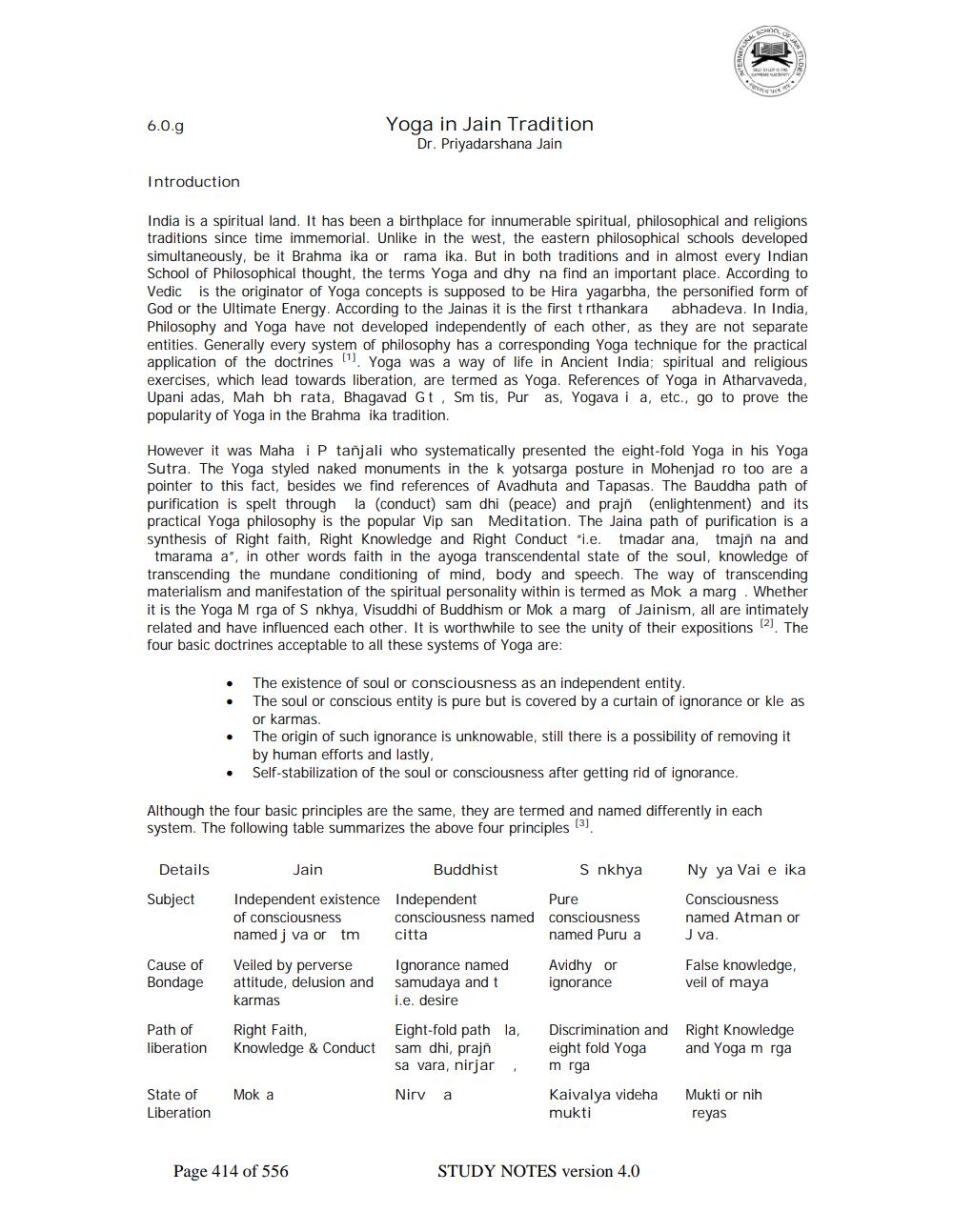________________
6.0.9
Yoga in Jain Tradition
Dr. Priyadarshana Jain
Introduction
India is a spiritual land. It has been a birthplace for innumerable spiritual, philosophical and religions traditions since time immemorial. Unlike in the west, the eastern philosophical schools developed simultaneously, be it Brahma ika or rama ika. But in both traditions and in almost every Indian School of Philosophical thought, the terms Yoga and dhy na find an important place. According to Vedic is the originator of Yoga concepts is supposed to be Hira yagarbha, the personified form of God or the Ultimate Energy. According to the Jainas it is the first trthankara abhadeva. In India, Philosophy and Yoga have not developed independently of each other, as they are not separate entities. Generally every system of philosophy has a corresponding Yoga technique for the practical application of the doctrines 11. Yoga was a way of life in Ancient India; spiritual and religious exercises, which lead towards liberation, are termed as Yoga. References of Yoga in Atharvaveda, Upani adas, Mah bh rata, Bhagavad Gt, Sm tis, Pur as, Yogava i a, etc., go to prove the popularity of Yoga in the Brahma ika tradition.
However it was Maha i Ptañjali who systematically presented the eight-fold Yoga in his Yoga Sutra. The Yoga styled naked monuments in the k yotsarga posture in Mohenjad ro too are a pointer to this fact, besides we find references of Avadhuta and Tapasas. The Bauddha path of purification is spelt through la conduct) sam dhi (peace) and prajn (enlightenment) and its practical Yoga philosophy is the popular Vip san Meditation. The Jaina path of purification is a synthesis of Right faith, Right Knowledge and Right Conduct ".e. tmadar ana, tmajn na and
tmarama a", in other words faith in the ayoga transcendental state of the soul, knowledge of transcending the mundane conditioning of mind, body and speech. The way of transcending materialism and manifestation of the spiritual personality within is termed as Mok a marg. Whether it is the Yoga Mrga of S nkhya, Visuddhi of Buddhism or Mok a marg of Jainism, all are intimately related and have influenced each other. It is worthwhile to see the unity of their expositions 12). The four basic doctrines acceptable to all these systems of Yoga are:
The existence of soul or consciousness as an independent entity. The soul or conscious entity is pure but is covered by a curtain of ignorance or kle as or karmas. The origin of such ignorance is unknowable, still there is a possibility of removing it by human efforts and lastly Self-stabilization of the soul or consciousness after getting rid of ignorance.
Although the four basic principles are the same, they are termed and named differently in each system. The following table summarizes the above four principles (3)
Details
S nkhya
Ny ya Vai e ika
Subject
Jain
Buddhist Independent existence Independent of consciousness consciousness named named j va or tm citta
Pure consciousness named Puru a
Consciousness named Atman or J va.
Cause of Bondage
Veiled by perverse attitude, delusion and karmas
Ignorance named samudaya and t i.e. desire
Avidhy or ignorance
False knowledge, veil of maya
la,
Path of liberation
Right Faith, Knowledge & Conduct
Eight-fold path sam dhi, prajn sa vara, nirjar
Discrimination and eight fold Yoga m rga
Right Knowledge and Yoga m rga
Mok a
Nirva
State of Liberation
Kaivalya videha mukti
Mukti or nih reyas
Page 414 of 556
STUDY NOTES version 4.0




